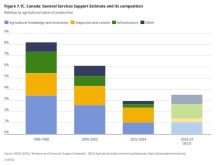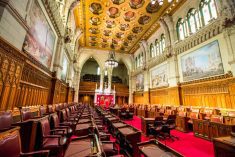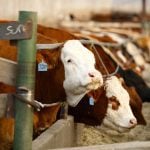Australia passed landmark laws Nov. 8 to impose a price on carbon emissions in one of the biggest economic reforms in a decade.
The vote in the upper house Senate made Australia the second major economy behind the European Union to pass carbon-limiting legislation. Tiny New Zealand has a similar scheme.
Its impact will be felt right across the economy, from miners and liquefied natural gas (LNG) producers to airlines and steelmakers, and is aimed at making firms more energy efficient and push power generation towards gas and renewables.
Read Also

Man shot in hunting incident
Three teens face charges after a 66-year-old man was shot in the arm outside of his home in the RM of Victoria
The vote is a major victory for embattled Prime Minister Julia Gillard, who staked her political future on what will be the most comprehensive carbon price scheme outside of Europe, despite deep hostility from voters and the political opposition.
Today Australia has a price on carbon as the law of our land. This comes after a quarter of a century of scientific warnings, 37 parliamentary inquiries, and years of bitter debate and division, Gillard told reporters in Canberra.
Australia has spent more than a decade debating the issue, which was instrumental in the 2007 fall of former Conservative prime minister John Howard and Labor s Kevin Rudd in 2010.
Opposition leader Tony Abbott has sworn a blood oath to repeal the laws if he wins power in 2013.
Australia accounts for just 1.5 per cent of global emissions, but is the developed world s highest emitter per capita due to a reliance on coal to generate electricity.
The legislat ion is being watched closely by others considering similar plans to cap carbon emissions, which are blamed for fuelling climate change.
It is the single most important policy mechanism that Australia has had and as a result it will increase certainty for participants, said Geoff Rousel, Westpac s global head of commodities, carbon and energy.
The scheme is a central plank in the government s fight against climate change and aims to halt the growth of the country s growing greenhouse gas emissions from a resources-led boom and age-old reliance on coal-fired power stations.
It sets a fixed carbon tax of A$23 ($23.78) a tonne on the top 500 polluters from July 2012, then moves to an emissions trading scheme from July 2015. Companies involved will need a permit for every tonne of carbon they emit.
Australia s carbon market is forecast to be worth as much as A$15 billion ($15.5 billion) by 2015, with sale of permits to raise A$25 billion in the first four years. Passage of the carbon price laws is expected to ensure the global market continues to expand over the next few years.
The World Bank estimated the global carbon market was worth about $142 billion in 2010, with the European Union Emissions Trading Scheme accounting for 97 per cent of trade.
Durban talks
The government hopes the bill s passage will help reignite the push for a global agreement to curb emissions ahead of international talks in Durban in December.
The laws are meant to give companies a financial incentive to curb pollution, and will help Australia reach its goal to cut emissions by five per cent of year 2000 levels by 2020.
Farmers will be exempt from the scheme but will be able to cash in by selling carbon offsets under separate laws.
The package of 18 new laws sets up the carbon price as well as billions in compensation for export-exposed industries and local steelmakers, as well as personal tax cuts for 90 per cent of workers, worth an average A$300 a year.
Clean energy gold rush
The government expects the scheme to spur a multibillion- dollar investment rush in new, cleaner energy sources, including natural gas and renewable power stations, to replace Australia s aging coal-fired plants.
Canberra has committed more than A$13 billion for renewable and low-emissions projects, including a A$10- billion independent Clean Energy Finance Corporation, with around A$100 billion in renewables sector investment expected by 2050.
However, full introduction of the Australian scheme remains uncertain with Abbott s promise to scrap it if he wins power. Gillard s minority government holds power by only one seat.
The next election is not due until late 2013, but opinion polls show Gillard s government would easily be swept from office. Abbott could potentially take power at any time in the event of a byelection in a government-held seat.
A poll Nov. 8 showed the Conservatives leading Labor by 53 per cent to 47 per cent. The government s popularity had improved slightly over Gillard s handling of economic and industrial relations problems.














